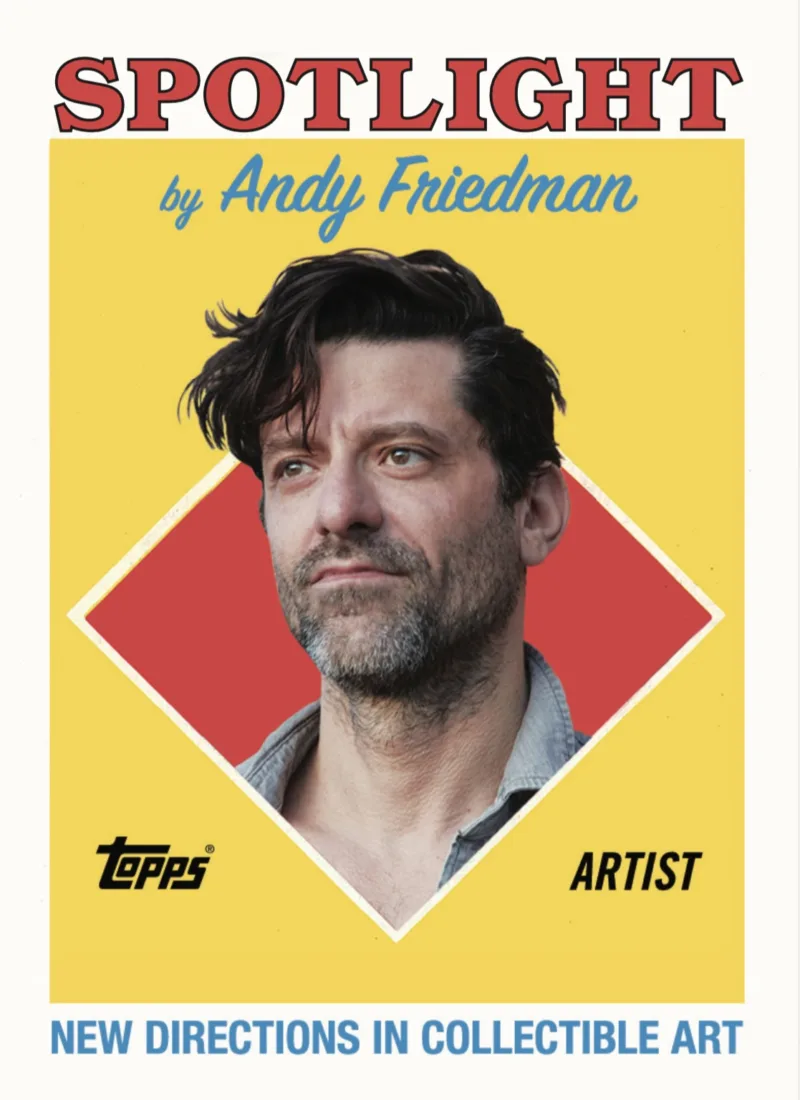
Topps Spotlight Baseball Creator Makes Art for Collectors
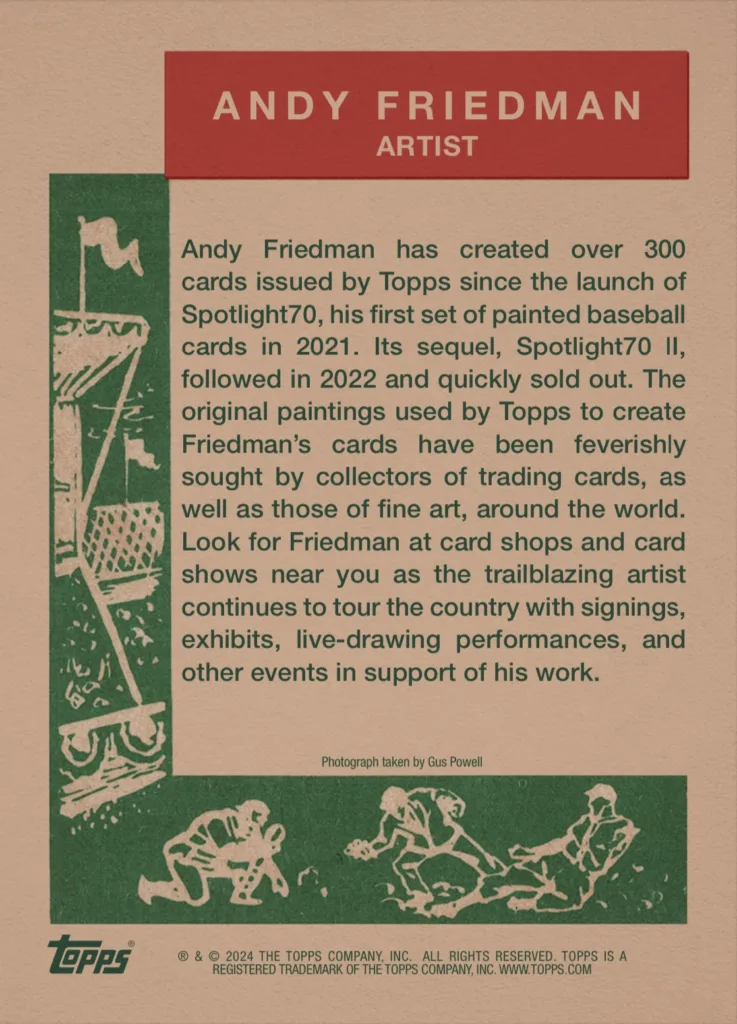
Andy Friedman, the artist behind Topps Spotlight Baseball, is on a mission. “As a visual artist, if you look back over the last 20 years, my goal has been to make the power, meaning, and message of art more accessible to the mainstream.” Friedman’s popular Spotlight series is a shining testament to this lifelong ambition, demonstrating that cards are and have been works of art. Friedman is elevating awareness of both the role and function of cards. Doing so, with this popular and affordable medium, serves to help democratize art.
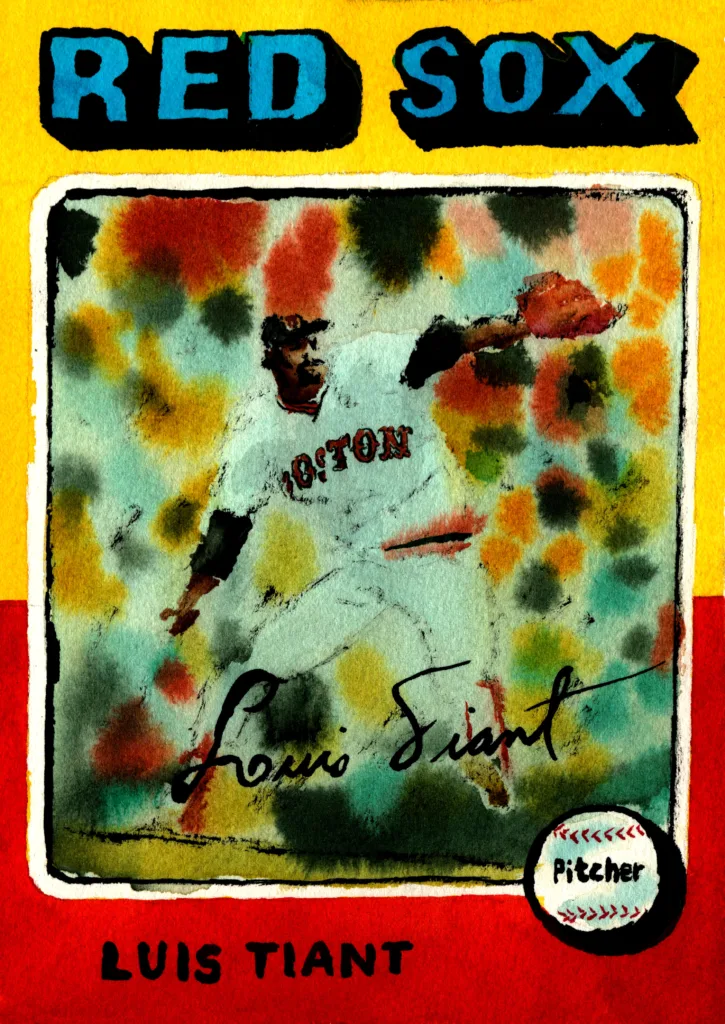
Each Spotlight card is produced from an original piece in Friedman’s catalog, based on a previously-issued card. “I’m not talking digital, I’m talking hand-painted paintings.” The success of the Spotlight series, including the fast-selling 2024 Topps Spotlight Baseball, has been a fascinating breakthrough for an artist in a world of collecting that does not always identify with its objects as art. “I travel around the country doing the card shows, I get into conversations about art, the nature of art, the universal appeal of art, with people who may have never really realized they had such a connection to the power of a painted image.”
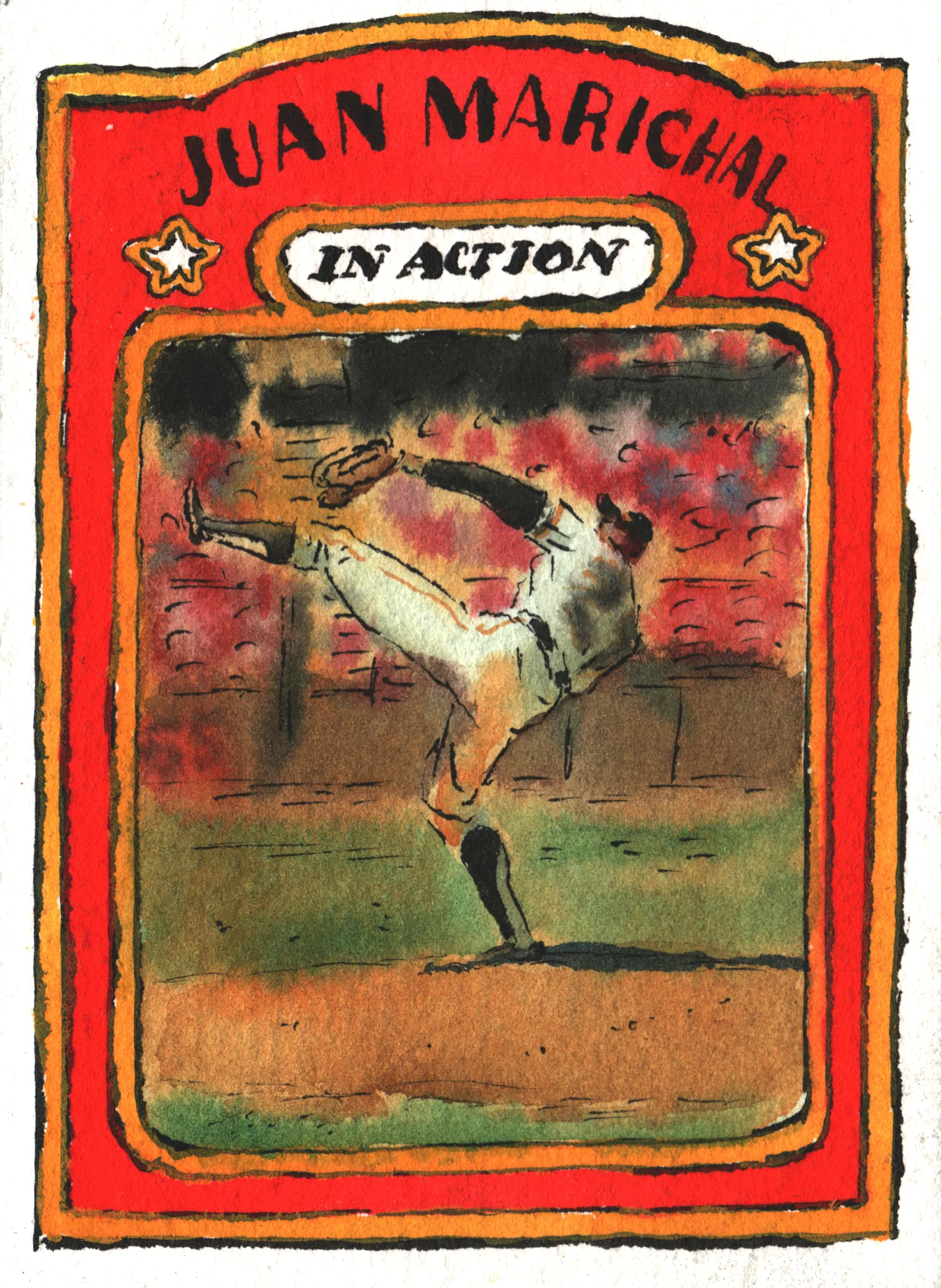
“Are cards art?” says Friedman. “That’s the question everyone says, are cards art? But I don’t actually think that’s the question. It really depends on what the artist is doing with it; is canvas art? Is marble art? The question is, what’s the artist doing with it so a card can be art?” Indeed, Spotlight is Friedman’s spectacular answer to the question.
“The actual process is, you know, ink and watercolor. When I paint a card, I see the card as an American popular standard, and I’m the jazz pianist offering an improvisational version. The notes I play come from color, scales determined by color theory, you know, melody happens in a conversation between color and line. That’s what’s going on in my head.”

The origin story of Spotlight Baseball is just as fascinating as the cards themselves. Friedman, now a long-time lover of the sport, came to America’s Pastime through trading cards first, and the game itself, second.
“When I was a young kid, my cousin gave me a whole stack of kind of no-name baseball cards, but they were all no-name to me. There was an Alan Trammell. I didn’t know Alan Trammell. I drew Pedro Guerrero. I drew expressions that resonated with me. They were like landscapes, you know? And the juxtaposition of portrait photography and graphic design stimulated my imagination.” Lacking a familiarity with the game, Friedman’s focus was purely on the card. “I drew them on index cards, both sides. I didn’t know what any of the numbers on the back meant, but I knew somehow they told a story. And that was really evocative to me, alluring.”


In 1985, Friedman was drawn to the release of the Garbage Pail Kids set, created by renowned cartoonist Art Spiegelman. “Garbage Pail Kids came out, and Garbage Pail Kids, like, Spotlight cards were really cool to me because I liked the art. I liked that Topps was putting out paintings, you know?”

Influences outside of the card world were also getting a young Friedman’s attention. “I was really into Norman Rockwell because my parents had a jigsaw puzzle of ‘Homecoming Soldier’, a Saturday Evening Post cover of a G.I. coming home from the war. I just couldn’t believe that someone painted that. It made sense to me. You can see the brushstrokes, because it’s like a puzzle. But then also the fact that it is a puzzle. I was really intrigued by how a painting could be turned into a mechanically reproduced image and end up as a jigsaw puzzle that my parents would put together and hang up on the wall. Then I made a new friend down the block, I go to his house and the same painting’s there.”

Friedman’s love affair with baseball began in earnest, in the magical 1986 season that saw the New York Mets drag victory from certain defeat against Bill Buckner and the Boston Red Sox. “I got wrapped into baseball and then it became, let’s collect all the ‘86 Mets. I started to get into the game, I joined Little League.” 2022 Topps Spotlight 70 Baseball Series 2 features a short-printed rookie card of Friedman himself, imagined as an outfielder for the Pittsburgh Pirates. “My team was called the Pirates. I struck out every at-bat,” remembers Friedman.

Even after embracing the game of baseball itself, when it came to the cards, for Friedman, the art was the thing. With the first Spotlight sets, Friedman left baseball’s iconic cards aside. “It was about just taking that chance, risk and fear, that’s what drove my colors, my line, I think that’s a universal theme and whether people realize it or not that’s what they’re feeling. If my sets were all nothing but Mickey Mantles, all the most iconic cards, I might doubt that people have any connection to the painting aspect.”

For the most recent set, 2024 Topps Spotlight Baseball, Friedman has chosen a slightly different approach, but one that still honors the way he approaches the cards themselves. “Topps said, ‘Hey, what do you think about us picking the cards this time?’ And I thought that sounds great; it’s like being handed a shoebox. I don’t have any control over what’s in the shoebox. I like nothing more than that when I walk around card shows and people say, ‘How do you find your cards?’ I don’t find them, they find me.”

Friedman also played with design elements found throughout the Topps Baseball landscape. “The refractors, there’s a few of them because what’s really fun for me to see is that the refractors that I painted are actually turned into refractors. Every card there’s a lot of parallels and variants. For every card in the set, there’s a one-of-one gold foil of itself, there’s one out of five rainbow foils, there’s one out of ten on canvas. So when a card, like the Jeter or the Freddie Freeman or the Garrett Cole that I painted to look like Refractors, they’re turned into rainbow foil cards, they’re turned into refractors, that’s really interesting for me to see.”
“The art directors at Topps when I was there to sign the backs of these cards and stamp them with that new Topps Certified one-of-one original Spotlight Art stamp that goes on the back of the card, they held them, shimmered it in the light because they felt like it was a refractor, but it’s a painting. So, the way they adjusted the card mimicked when they had an actual refractor, just instinctively.”
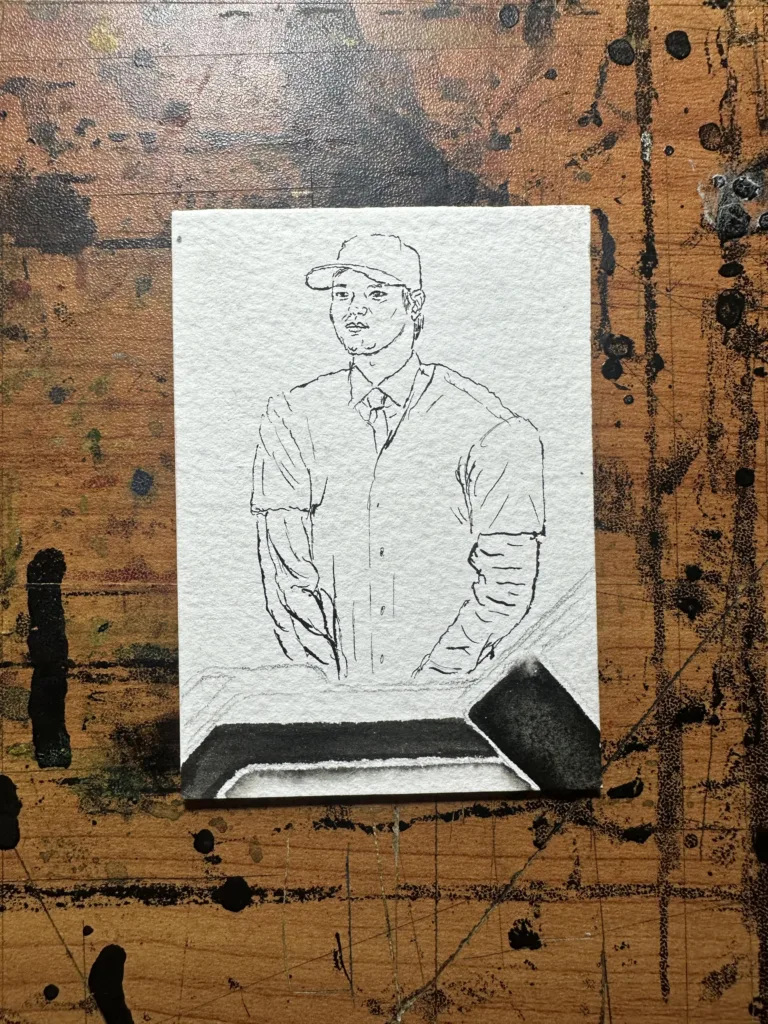
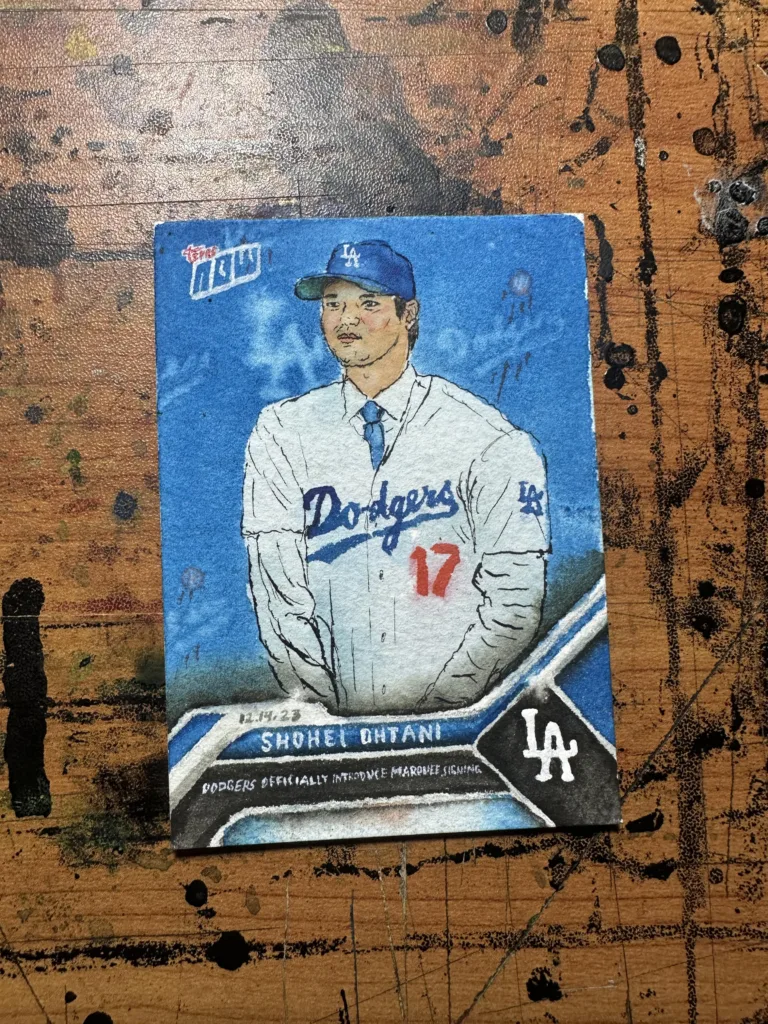

Friedman’s artistic process itself has itself created cards of interest for collectors. “I hold every card in my hand when I paint the cards. I don’t like painting from a digital image. I painted a ’56 Jackie Robinson, I bought the card because I insist on holding it in my hand. And now collectors have been collecting the cards I hold in my hand, there’s paint, ink on them, I have a rubber stamp that says ‘Used by artist as reference’, now it’s a one-of-one, I sign it. Now it’s not just a ruined card, it’s ironic, but depending on who you are, if you ruin the card it actually improves it.”
Indeed, there’s something about the exciting and interactive experience created by a chase for a card that Friedman used as reference, by collectors who are wanting to get closer to, get a closer sense of, the artist at work, that gets at the very heart of Friedman’s project, and his mission. It’s a sign that those in The Hobby have a real appetite to engage with the notion of cards as art, and not merely because a card is art but rather, the card has been made into art by the artist, the paint, the ink, the color, the line, the story.
Tucked into some 2024 Topps Spotlight Baseball packs are one-of-ones of a different sort — the original piece of art painted by Friedman. “I had one art critic reached out and said, ‘You know I’d like to write about this. Do you have any exhibits? Is any of the work being exhibited?’ I said, ‘Yeah, it’s exhibited in the pack; it’s literally in the hands of collectors who are lucky enough to find it in the pack. And that’s that’s ultimately when you pull back – I’m making an expression about baseball, yeah, but I’m making a bigger expression about art, what’s fractured in the art world presenting alternatives for every artist to reach mainstream America, it’s a continuation of what Rockwell was doing with the Saturday Evening Post. Why does everyone need to go to Chelsea to see the exhibit? What counts? What stat? How much was it sold for? Who bought it? Art’s often not making itself available to the rest of America.”

On the heels of the wildly successful 2024 release, Friedman is looking forward to continuing what has been a fruitful relationship with Topps. “We feel each other. They really supported this vision. They’ve helped hone the vision. It’s a real collaboration, you know? And, the collectors are excited by it. You know, once a relationship is formed between a collector or viewer and an artist, whether art, music, dance, whatever, you’re all interested in seeing what’s going to be said next.”